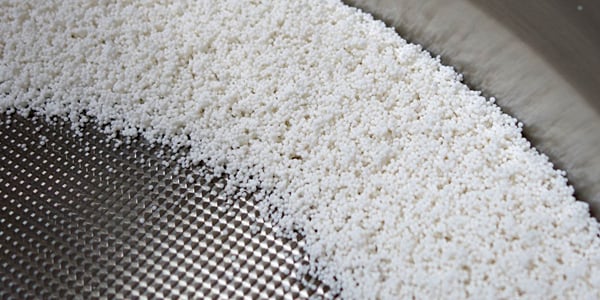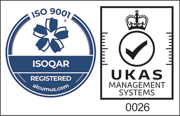There are two main ways to make small pellets for drug delivery:
- Drug layering onto inert starter (or seed) pellets that are bought commercially
- Extrusion and spheronization binding the active material in the substrate of the pellet from the beginning
There is no right or wrong way to make pellets. The most appropriate method for your particular application will depend on what you are trying to achieve and the resources and limitations that you have available.
The main differences are shown below:
Extrusion and Spheronization
- A very fast process
- Pellets can be mixed in a single dose
- Higher drug content without size increase
- Most popular method
- Powder to pellets in 30 minutes
Layering
- Slow and laborious
- Layers of different composition possible
- High drug content increases pellet size
- Less used due to slow process
- Powder to pellets in several hours (minimum)
The main reason that the process of extrusion and spheronization is a much more widely used technique than layering is the ability to produce quantities of products quickly. In development and testing of formulations, new iterations of small batches (from about 30 g) of product samples for testing can be produced in about 30 minutes or so. With layering, several hours are often required to make a sample batches for trials. Progress is slow with layering, and development can be prolonged.
This fast extrusion and spheronization versus slow layering situation in product development is then carried through to the production operations. A small commercial manufacturing operation can often produce between 50 kg and 150 kg per hour of dry pellets ready for packing using Extrusion and Spheronization. With the layering process a single batch of 20 to 30 kg might require up to 20 hours of the slow layering process to finish this smaller batch. If significant quantities of pellets are required by layering then a significant amount of capital equipment and space will be needed.

Product dossiers can be produced faster with Extrusion and Spheronization.
In summary, unless your product or situation actually requires the specific advantages of layering technology, for example, if you already have the equipment or some specific technical reason (but it is hard to see what these might be), then there seems no good reason to opt for the time consuming layering process.
This approach is reflected by the fact that most of the major drugs offered as pellet formulations are manufactured mostly by extrusion and spheronization. This list of drugs includes:
- Omeprazole
- Venlafaxine
- Propranolol
- Esomeprazole
- Diclofenac
- Theophylline
- Lansoprazole
- and many more
Click here for a more complete list of drugs offered as pellet formulations that are mostly made by extrusion and spheronization. This list is not exhaustive and is an indication of what is possible.
We are working closely with many partners in a wide variety of industries as well as pharmaceutical. The industries where we are helping our customers to make pellets and extrudates are listed below.
Catalysts
Petrochem
Zeolites
Biofuel
Ceramics
Polymers
Batteries
Nutraceutical
Aquaculture
Fish Food
Agriculture
Agrochemical
Biotech
Bone Filler
Food
Yeast
Flour
Cosmetics
Soaps and detergents
View Caleva's range of production scale spheronizers for more information.


Leave A Comment